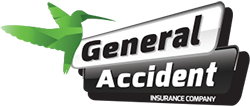Trip Tips Pit Stop Tyre Change
Getting a flat or a punctured tyre can put a damper on a trip.
And, changing a tyre always looks so easy, but that is usually when someone else is doing it. Even as a passenger, it is a good idea to know how to change a tyre.
Here are some dos and don’ts:
DO
Travel with a spare ALWAYS: Getting back to your trip as soon as possible is only possible if you have a spare. It does not have to be a full regulation type but it must be in good condition, and correctly inflated, so that it can take you to your destination.
Have a well-stocked toolkit: The kit must include the car-jack and locking wheel nut key and flashlight for night time breakdowns. You may want to have a sturdy piece of board or stone to ensure the stability and safety of the vehicle. Safety cones with reflective lights are a bonus.
Ensure your vehicle is in a safe area and on stable ground: This is two-fold, as flats can happen in the most inconvenient and unsafe places. If it’s in an urban area, ensure that you secure the area around you with traffic cones or have someone standing by you to alert other road users that you are changing a tyre. Secondly, if it is dark and you are alone, drive to a well-lit area before you start to change the tyre.
Remain calm: If there is a tyre blow-out, slamming the brakes or attempting to swerve the road immediately is not ideal. Panicking may also cause you to lose control of the vehicle. Accelerate slightly and steer the vehicle as straight as possible. Slowly remove your foot from the accelerator. Turn on your hazard lights and steer the vehicle to a safe area to change the tyre.
DON’T
Overtighten your lug nuts: This happens often and leads to damaging the nuts, making them difficult to remove later on. If you can’t move the wrench around, that is tight enough.
Cross-thread your tyres: When the lug-nut and stud threads do not mesh up together, you have cross-thread your tyres. This can happen if you over-tightened the nuts or have fastened the nut at a wrong angle. Avoid cross-threading by using the correct lubricant on your threads.
Drive on your spare any longer than is absolutely necessary: Spares are for emergencies; so return to a full-sized tyre as soon as possible. Also, remember to fix the damage on the original tyre.


